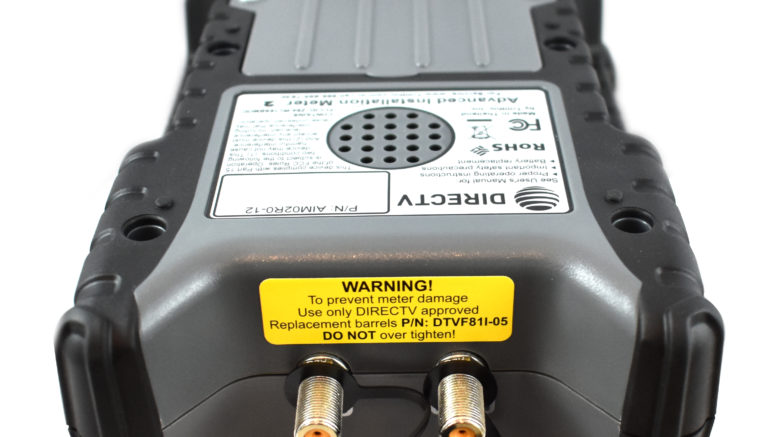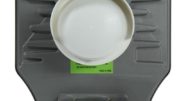If you have an AIM 1.5 or AIM 2 meter, you might have seen the warning sticker on it. It tells you in no uncertain terms that if you’re replacing those barrels, you had better use DIRECTV-approved F81 barrels. But really, is that just total nonsense?
What is a barrel connector?
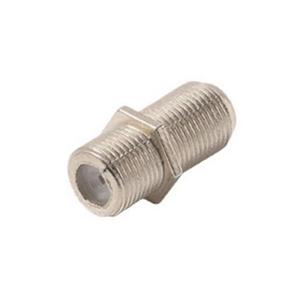
Barrel connectors use female connections on both sides to allow you to connect two cables together. The two cables and connectors form a “splice” that helps installers replace bad bits of cable without replacing the whole cable. AT&T’s guidelines say they are to be used as little as possible but sometimes there’s no choice. They’re referred to in technical documentation as F-81 connectors; I assume that’s some sort of IEEE designation.
The story of the colors
You can tell the use of a barrel connector by the color of its center. The least expensive ones have a pale white center, as you can see above. Third-party barrels for high frequency use often have a blue center, as you can see below:
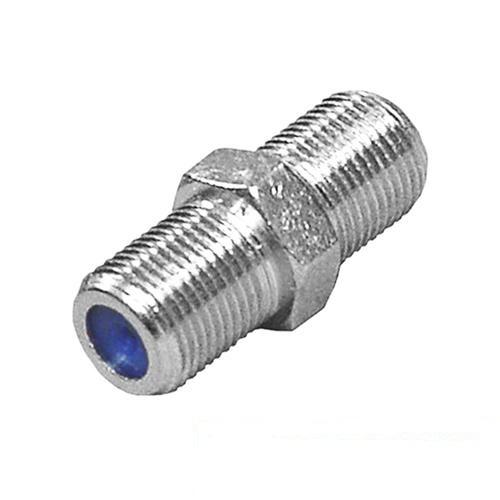
For some reason, even though AT&T and DIRECTV pretty much live by their blue color, AT&T-approved barrels tend to have a yellow-orange center. Yeah, it doesn’t make sense to me either but here it is:
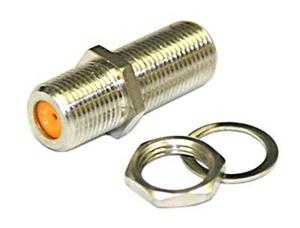
Sometimes the color will be bright orange like you see there but sometimes it will just look like a pale yellow like a faded piece of paper.
Aren’t these all really the same?
First, a couple of honest truths.
- I have used blue-centered barrels for years on my DIRECTV gear and had no problem.
- In fact I never saw the orange ones at all until a few years ago.
- There’s no regulatory agency that controls what these different barrel colors mean.
In theory, the blue-centered barrels are designed to pass frequencies up to 3GHz. That’s critical for satellite service. The orange-centered ones also feature high return loss (greater than 30dB.) Return loss a measure of the amount of signal that is bounced back into the cable when the connector is used. A higher number is better.
High return loss is as important as anything else especially when you’re dealing with shorter cable runs like you’d find in an equipment closet. Since you’re not supposed to even use barrels at all unless you have to, ideally you’d want the best possible one. You’d want the one that brings the fewest problems.
There are no guarantees in life but…
Having done some informal testing, I didn’t really find any real measurable difference between using plain, cheap barrels and the more expensive kind. It’s possible the cheap barrel is made to the same spec as the more expensive one. But I will still use the more expensive one because it’s possible that my strong satellite signal was just hiding some of the problems. Possibly, a weaker signal could have exposed the issues with using cheaper barrel connectors.
Really, getting the right barrel connector isn’t much more expensive and it’s going to give you peace of mind. If you’re looking for F-81 barrel connectors, don’t go to the home store. They’ll only sell the cheap ones. Get the right connectors now by shopping at Solid Signal.

